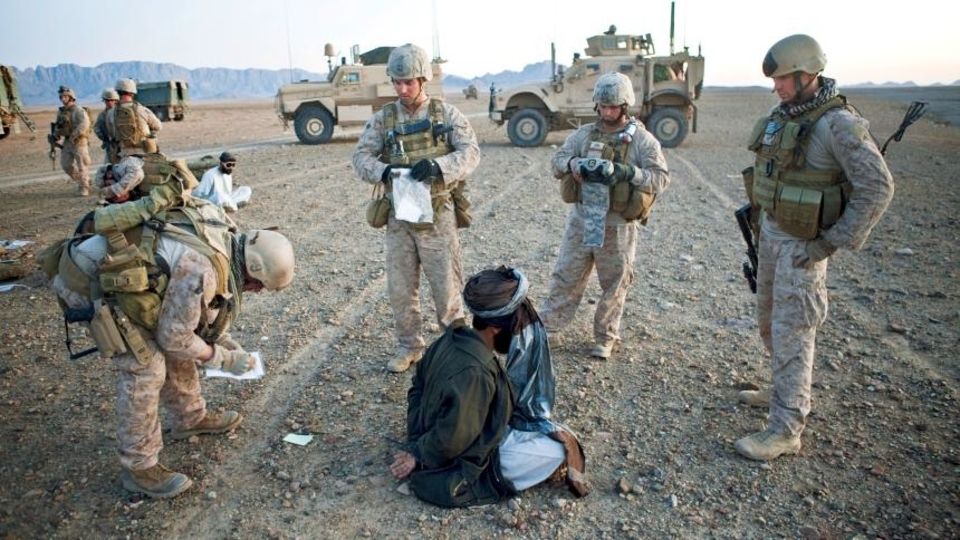by VIJAY PRASHAD

Noam Chomsky’s 1973 book, The Backroom Boys, exposed the lies used by the US establishment to justify the war on Vietnam and pointed out that these were not aberrations. The latest documents on the Afghan war prove this point
Noam Chomsky recently celebrated his 91st birthday. As an homage to Noam, I spent the day with one of his lesser-known books—The Backroom Boys (1973). The book is made up of two spectacular essays, the first a close reading of the Pentagon Papers. To read this book alongside the trove of documents released by the US government as part of its own internal study on the ongoing US war on Afghanistan is telling. Both the Pentagon Papers on Vietnam and the recent Washington Post disclosures on Afghanistan show that the US government lied to its citizenry about a war that could never be won. If you substitute the word “Afghanistan” for the word “Vietnam,” you could read Noam’s essays from 1973 and imagine that they were written today.
Body counts
There was one quote in the Afghanistan papers that stopped me. It was almost as if I had read this before in the Pentagon Papers. In 2015, an unnamed National Security Council official said, “It was impossible to create good metrics. We tried using troop numbers trained, violence levels, control of territory and none of it painted an accurate picture.” With regard to Vietnam, the Military Assistance Command, Vietnam (MACV) constantly inflated “body counts”— the number of dead Vietnamese — as a metric of impending victory. This is clear in both the Pentagon Papers and in the papers at the Johnson Library (Austin, Texas).
One soldier who worked in MACV would often go along with the generals to observe the battlefield. His words, collected by Toshio Whelchel, are worth reading: “Once we flew over an area after a B-52 raid and the devastation was incredible. There were all these plastic bags out there with our guys supposedly counting bodies of enemy killed. But they were merely picking up body fragments—anything to put in the bag—and counting each one as a single kill.” These numbers pleased Washington; they were what was sold to the public as a metric to gauge how well the war was going.
Napalm
Noam’s essay on the Pentagon Papers begins with the words of a US air force pilot who explains the “finer selling points” of napalm. A certain generation knows exactly what “napalm” is, but younger readers might not be aware of it. Napalm is one of the most hideous weapons ever made—petroleum based, with gel that makes the fuel stick to the human skin. It was used with great gusto against the Korean and Vietnamese people.
The pilot who drops napalm on the civilians says, “We sure are pleased with those backroom boys at Dow [Chemical]. The original product wasn’t so hot—if the gooks were quick enough they could scrape it off. So the boys started adding polystyrene—now it sticks like shit to a blanket. It’ll even burn under water now.”
These sentences require patience. The airman is talking about the Vietnamese. He uses the term “gooks,” which seems to have had its origins in the US invasion of the Philippines in 1898, and then was used to refer to Haitians and Nicaraguans, Costa Ricans and Arabs—anyone that the US military and air force seemed to be killing. The term was used to describe the “natives,” the people whose bodies were worth only what work they could do for the “masters.” This is the vocabulary that does not go away. It reappears in Afghanistan.
Chillingly, the airman says that he would like the weapon to be more lethal, the chances of civilians being able to save themselves nullified.
Wars of national liberation
In the backrooms, the scientists make the weapons and the analysts debate the war. What was so stunning about the Pentagon Papers was that the entire establishment knew that the United States would not be able to defeat the Vietnamese people, and that even with the use of such barbaric weapons as napalm and Agent Orange, the Vietnamese would not lose their morale.
Peoples Dispatch for more
